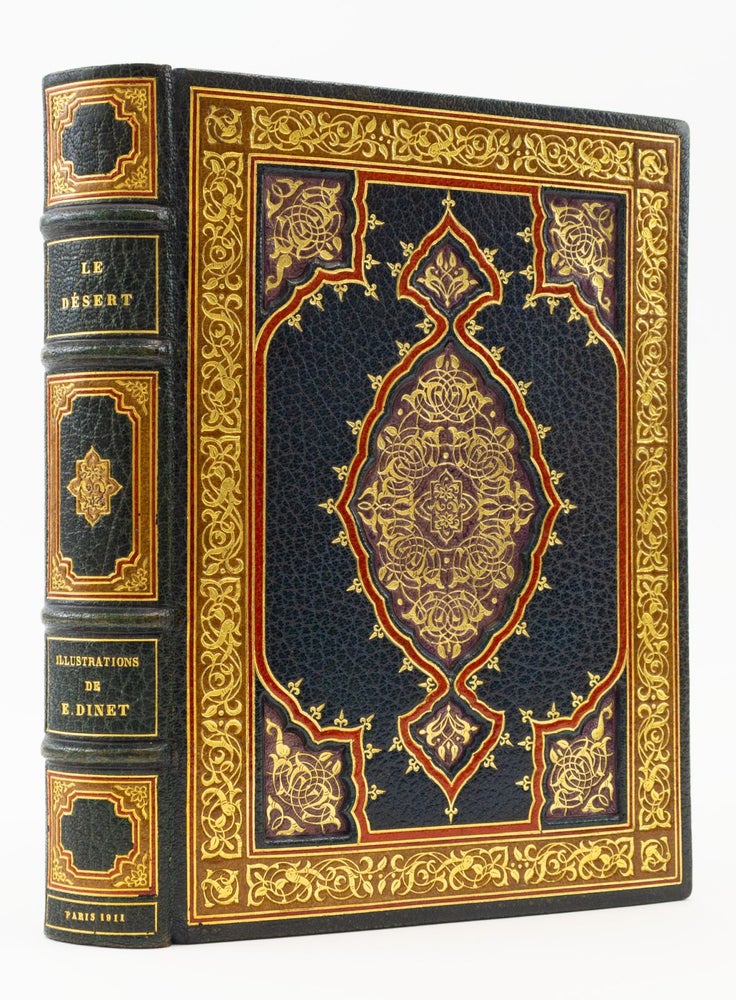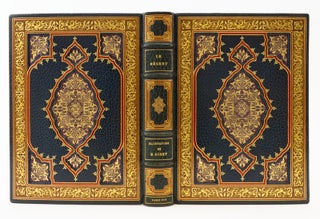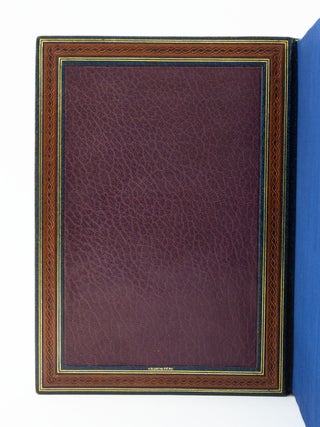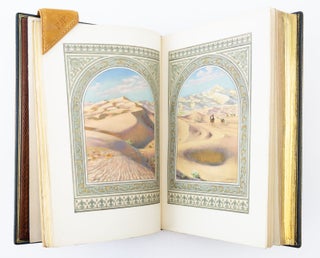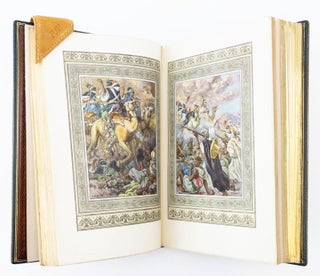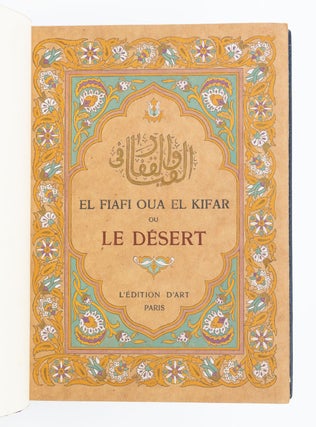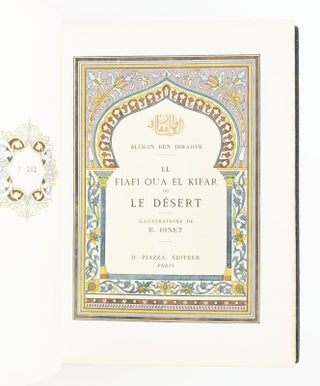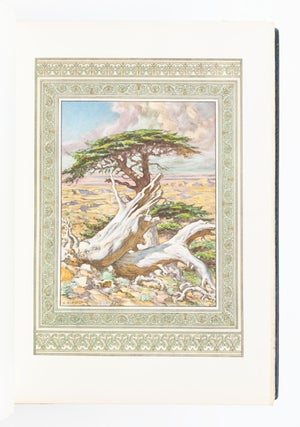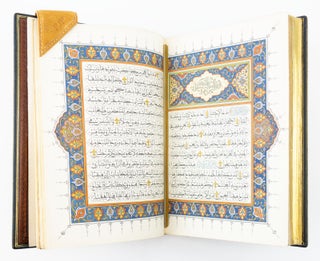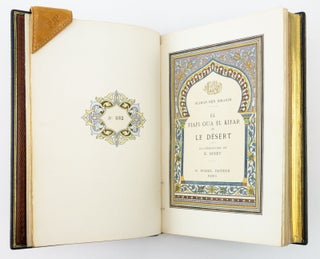EL FIAFI OUA EL KIFAR, OU LE DÉSERT.
(Paris: H. Piazza, 1911). 236 x 168 mm. (9 3/8 x 6 5/8"). 198 pp., [2] leaves. No. 262 OF 450 COPIES.
SUPERB DARK BLUE CRUSHED MOROCCO, GILT AND INLAID TO AN ARABIC DESIGN BY BLANCHETIÈRE (stamp-signed in gilt on front turn-in), covers with frame of gilt-tooled tan morocco outlined in scarlet morocco, central panel with recessed cornerpieces and central arabesque of lilac morocco, its edges framed with inlaid scarlet morocco, raised bands, spine compartments framed in tan and red morocco with gilt tooling at corners, central compartment with inlaid center ornament of tan morocco tooled with gilt flowers, gilt lettering, PURPLE MOROCCO DOUBLURES framed in blue and brown morocco with blind chain roll, royal blue moiré silk endleaves, all edges gilt. Original color-illustrated paper wrappers bound in. Housed in matching morocco-lipped slipcase. Title page and three section titles with elaborate Islamic frames printed in colors, 41 COLOR ILLUSTRATIONS BY ÉTIENNE DINET, nine of them full-page, nine double-page. All text with decorative frames printed in green. ◆Spine just faintly (and evenly) sunned, but A BEAUTIFUL COPY, SPARKLING INSIDE AND OUT.
This collection of stories of life in the Sahara Desert is not only in a sumptuous binding, but its color illustrations are printed with such skill that they seem very much like original paintings. French Orientalist painter Étienne Dinet (1861-1929) met his Arabic teacher and closest friend, Sliman ben Ibrahim (1870-1953), in Algeria in 1889, when Sliman saved the painter from an ambush. Sliman accompanied Dinet to Paris in 1896, where the latter met the French Society of Oriental Painters and impressed them with both his character and his couscous. Sliman and Dinet collaborated on several other works, including a biography of Mohammed and an account of the Hajj they made to Mecca after Dinet's conversion to Islam. The gorgeous binding by Henri Blanchetière (1881-1933) utilizes rich jewel tones, scalloped edges, and complex gilt scrolling patterns, calling to mind Islamic art and architecture and echoing Dinet's beautiful designs used inside the book. After training with Marcellin Lortic and René Kieffer, Blanchetière took over the atelier of binder Joseph Brétault in 1906, at which time "he aligned himself with Marius-Michel in the pursuit of a modern binding style inspired by nature. His designs incorporated a cautious blend of Art Nouveau flowers," and "after World War I, he gradually cut his remaining ties to traditionalism." (Duncan & De Bartha) As a craftsman of artistic fine bindings, Blanchetière ranks with Kieffer and Charles Meunier, but his bindings are less commonly seen in the marketplace. (ST17882)
Price: $4,000.00

